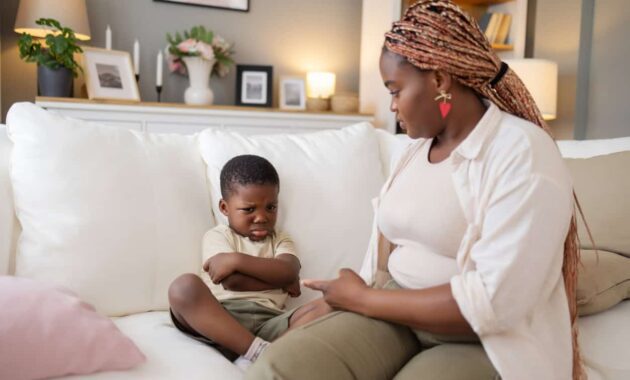Anger often gets a bad rap, and this is because people often confuse it with aggression. But let me reassure you that anger isn’t a problem. In fact, it’s necessary. When handled constructively, it helps our kids advocate for themselves, ensure their needs and boundaries are met, identify and “right” wrongs, and manage big emotions. What’s important isn’t stopping our kids from feeling angry; instead, we want to teach them how to be angry in healthy and adaptive ways.
4 Healthy Ways To Teach Your Child To Express Anger
As our kids grow and develop, they’re constantly learning and figuring out how to make sense of and manage their big feelings. Research tells us just how vital this process is — kids who develop emotional regulation skills early are more likely to succeed socially and academically.1 However, when children learn to suppress their emotions (yes, anger, I’m talking about you), these feelings or underlying needs don’t leave. And they can surface in more disruptive or unhealthy ways down the line.2 So, let’s explore how we can help our children express their anger without hurting themselves or others:
1. Name It and Normalize It
To tame anger, our little ones must first understand what anger is, why it happens, and that it’s a normal emotion and response to things happening in their world. When we tell them, “It’s okay to feel angry,” or “Having angry feelings is normal,” we’re teaching them that emotions are simply messages and nothing to be frightened or worried about. And when we give those feelings names (like “Upset,” “Frustrated,” or “Disappointed”), it helps them process their emotions more effectively.3 Labeling or naming their emotions is actually the first step in learning to regulate themselves. This also helps improve their ability to manage and respond to big feelings and reduces behavioral issues.4
2. Model Being Cool, Calm, and Collected
Our tiny humans learn directly from the way that we handle ourselves. They’re looking at what we do and say when we feel a range of emotions. This gives them a blueprint for how they should react to similar circumstances. So, if we can keep calm and ensure we’re respectful even when angry, we can show our kids how to do it. This is thought to happen through co-regulation, which is when a child learns or processes something due to support from someone else. In this case, that “someone” is their parent or caregiver (i.e., they learn how to handle anger when they see how you manage it).2
3. Help Them Channel It (Safely)
Has anyone ever told you to “calm down” when you were feeling frustrated? And when did that work? Most likely . . . never. Telling our kids to calm down when they’re having a meltdown is just as ineffective. Rather, we need to help them channel their big feelings safely so they don’t harm themselves or others. One idea is to create “stampy feet,” where you draw or print out footprints that they can stamp, step, or jump on to get their big feelings out. Or if they feel like shouting, you could encourage them to sing a song really loudly instead. They can also do star jumps, bounce on a trampoline, or jog on the spot to shift the extra energy that comes with angry feelings. Another great strategy is ripping or crumpling paper or squeezing and pulling playdough apart.5
4. Connect and Reflect
In the midst of your child’s meltdown, it’s not time for a lecture or learning. But when the dust has settled, it’s important to calmly reflect with them about what happened. Name the feeling and the reaction you saw, and then work on some healthy strategies moving forward. For instance: “Hey buddy, I know you felt so mad that your sister wouldn’t share her toy. But instead of shouting and snatching her toy, what could we do the next time we feel mad?” You could then offer more effective strategies for the situation. Essentially, we want to model problem-solving and reinforce that you’re a safe person and space for them, even when they’re struggling.6
The Bottom Line
Teaching our kids to really feel their anger and appropriately express this emotion is vital to their overall well-being. It’s not only about avoiding a meltdown; it’s about equipping them with skills they’ll use throughout their lifetime, such as resilience, empathy, and emotional intelligence. If our children understand that anger is just a message (and an important one at that!), they can learn to experience, harness, and manage it without shame.
Disclaimer: This content was automatically imported from a third-party source via RSS feed. The original source is: https://www.baby-chick.com/how-to-teach-your-child-to-express-anger-in-healthy-ways/. xn--babytilbehr-pgb.com does not claim ownership of this content. All rights remain with the original publisher.
